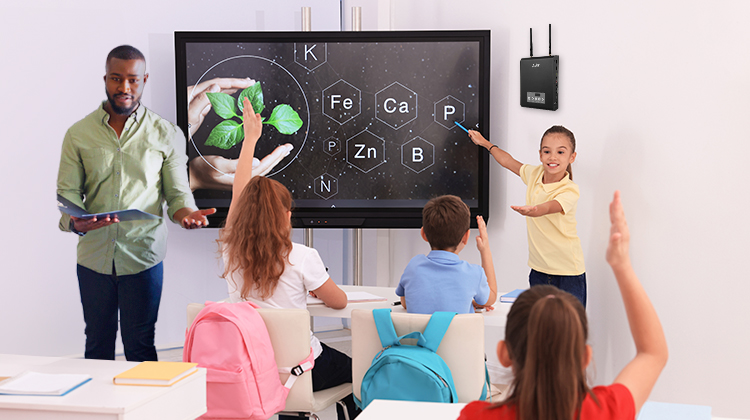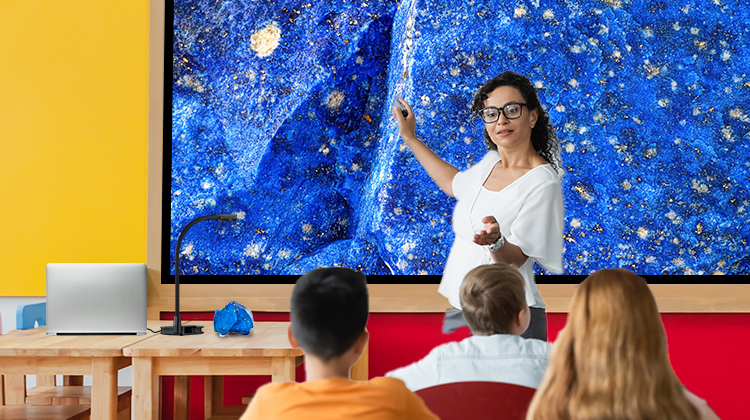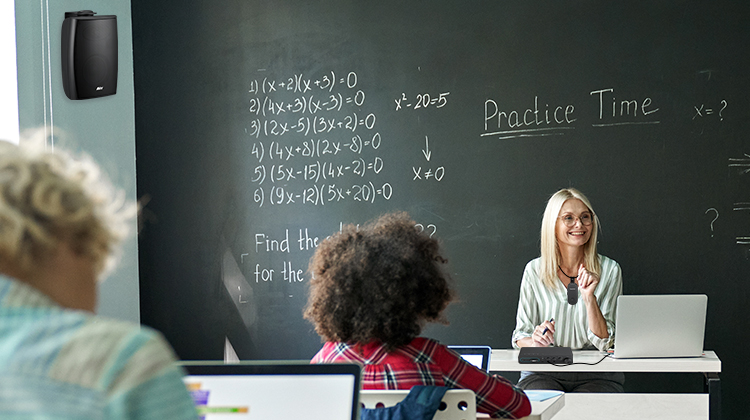“Invest in our teachers, and our children will succeed.”
As Teacher Appreciation Week approaches in May, it’s the perfect time to celebrate the educators who tirelessly shape young minds and inspire a love for learning. While many ideas such as thank-you cards and creating arts and crafts add a personal touch, perhaps the best demonstration of gratitude is to provide teachers with the means to thrive in the classroom all year round.
So while we thank teachers this week, let's also send some appreciation to the behind-the-scenes tools teachers need for impactful instruction. Here’s a quick rundown of essential audio-visual equipment that makes every in-person or online class a great experience that keeps students engaged.
Displays

To focus everyone’s attention, displays are indispensable to help teachers share lecture notes, presentations, videos, and any other media content. Whether explaining complex concepts or sharing historical footage, interactive displays, projectors, or video walls can do a lot of the heavy lifting to engage students. This is backed by research by the National Institutes of Health (NIH) that shows the effectiveness of multisensory learning in improving educational outcomes.
Nowadays, displays often combine the features of whiteboards and touchscreens. These smartboards encourage student participation and allow teachers and students to write, draw, and manipulate content using their fingers or special pens.
Tips:
- Digital display choice boils down to size (bigger for distant viewers), software compatibility, connection options, and display resolution. Generally, 4K or Ultra HD resolution is recommended for screens 50” and up. Displays between 50-75” work well for rooms with 20–30 students.
- A control box can truly empower teachers and maintain lesson flow. This unsung hero serves as the connective “brains” between a teacher's device and the main display, instantly mirroring whatever is on their laptop or tablet — whether images, videos, or web pages — onto a larger screen for all students to see.
- If using a projector, consider the ambient light in the classroom. If the classroom has plenty of windows, you may need a projector with a higher lumen output to compensate for the natural light. Also, choose a projector with a long lamp life and eco-friendly features to save on replacement costs and energy consumption.
Visualizers

Also known as document cameras, visualizers are similar to high-tech overhead projectors. They capture real-time images or documents and display them on a screen. Teachers can magnify content in textbooks, worksheets, or even dissect a frog. Visualizers that offer a wide zoom range and project high-quality pictures are the best bet.
Most visualizers these days offer automated functions that make it super easy to simply “point and display.” They have a wide capture angle, auto-focus features, and come with a built-in LED lamp for better illumination.
Tip:
If you plan to save images or recordings from the visualizer, be sure to have enough storage space on your computer or external storage device. Alternatively, many visualizers also allow for direct syncing to cloud storage — e.g., if you’re running AVerTouch software signed in to Google Classroom on your PC/laptop, recorded materials can be saved to Google Drive.
Audio Systems

Clear audio is not only crucial for effective instruction but also a way for the teacher to project authority in class. Audio systems include microphones and speakers strategically placed around the room to ensure that every student can hear instructions, discussions, and presentations clearly.
Today's classrooms demand a lot from microphones — they need to fill the room with clear audio as well as deliver high-quality audio to students attending class virtually.
Tip:
Microphones can be omni-directional (pick up sound from all directions), uni-directional (pick up sound from one direction), or bi-directional (pick up sound from two opposite directions). Choose based on how you usually move around the classroom and where you want the microphone to focus to ensure consistent sound quality for both in-class and remote learners.
Distance Learning Cameras

In today’s interconnected world, HyFlex education models rely on video to include remote students in real-time participation and discussion made possible through distance learning cameras. Additionally, recordings allow all students to review material they may have missed or not fully understood the first time, help visual learners learn through seeing concepts in action, and provide an objective record for teachers to reflect on their practices.
Tip:
Choose a camera with a high-resolution image sensor, a wide field of view, and good zoom capability so that it can focus on specific objects, the teacher’s face, or parts of the classroom.
For more tips, check out these posts: